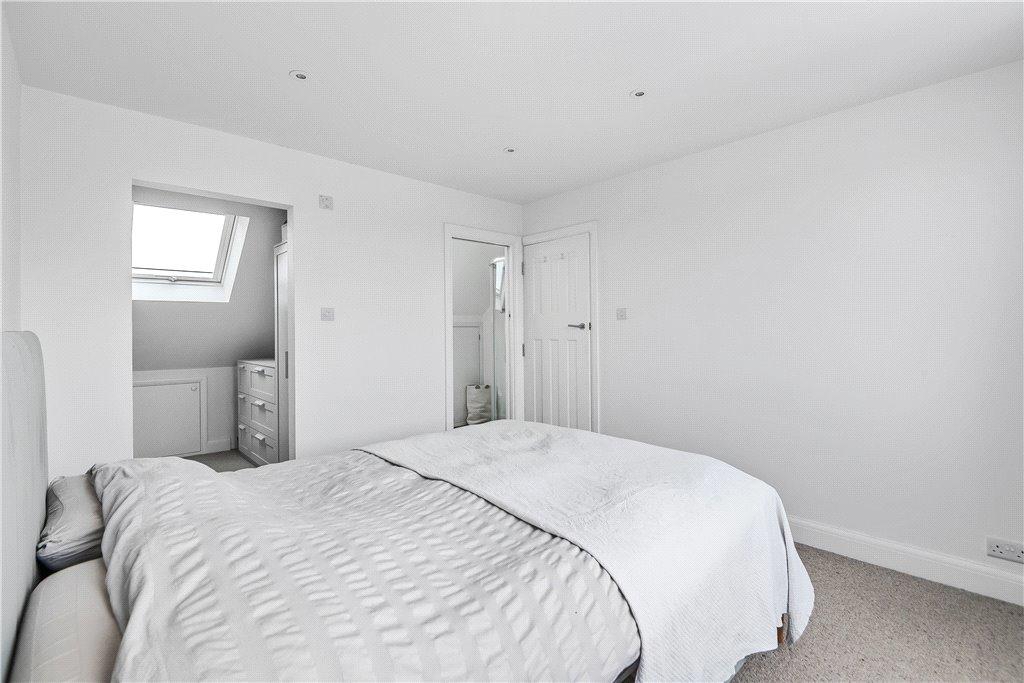Design Tips for Loft Spaces in Your Barnet Property: Make the Most of Natural Light
July 2, 2025

Once you convert the loft space of your property, you can use it as a bedroom, library, office or studio. With an abundant flow of natural light inside, it might look more spacious. However, you need to know which type of loft conversion to choose to allow natural light to come in.
In the following blog, we will discuss some essential tips which will help you to make your lofts filled with natural light.
Choose the Right Type of Loft Conversion for Light Access
When you decide to go for a loft conversion in your property, you should decide on the correct type of loft conversion. If you're on a budget and want to make your attic usable, consider a Velux loft conversion. In this type of conversion, you don’t need to make structural changes to your roof; instead, you install roof windows to make way for natural light to come in.
Whereas a Dormer conversion adds a protruding box-like structure on the top of your roof. It features large windows, which is great for bringing in more natural light to the space. Besides natural light, it also offers more headspace.
On the other hand, if you prefer more natural light and headspace, consider a mansard loft conversion. It adds a vertical wall, which is approximately at a 72-degree angle, on one side of the edge. The roof over the slanted vertical wall is often flat. This type of loft typically features a balcony and large windows, allowing natural light to enter.
Strategic Placement of Skylights and Roof Windows
You might think that placing a large window is the right way to bring more natural light into the loft space. That might not always be the right choice. Instead, you can install multiple small roof windows for a better distribution of natural light.
However, if you plan to utilise the space as a bedroom, excessive natural light can be troublesome for sound sleep. In that case, you can use a manual or an electric blind to control the natural flow of light.
Use Glazing to Enhance Light Flow
Careful use of glazing can work excellently to allow natural light to travel freely in the loft space. If you plan to build a balcony attached to the loft space, consider using glass balustrades. It will not obstruct the natural flow of light into the loft.
Moreover, you can also use large glass window panels to allow natural light to come into the space. If you use glasses in the loft area, the space will seem more welcoming.
Light-Reflective Surfaces and Colour Schemes
The colour you plan to use inside the space determines how natural light will be reflected within the loft. It’s better to use bright colours like white, light grey and cream inside the walls of the loft. You can also paint the ceiling with light colours to keep the area shiny.
Moreover, glossy finishes on the furniture and floor will help to reflect more light inside the area. The glossy finish of the place can be enhanced by installing mirrors inside the loft. Natural light will bounce across the room, making it appear brighter.
Design Layout Around Natural Light Sources
When designing the layout of the loft space, remember to place reading nooks, desks, or dressing tables near the window. So, you would not need artificial light to read or get ready for the fancy party.
However, place bulky furniture away from the windows. This furniture will block the natural light from entering the loft space. Try to keep the space as uncluttered as possible to maintain its spaciousness. It will also allow natural light to reach each corner of the room without obstruction.
Consider Window Shape and Building Regulations
Remember that a mansard loft conversion may require an application for planning permission, as it involves several structural additions. However, consider placing roof windows in a shape that complements the look of your building.
Consult with experts at Loft Conversion Barnet and get suitable advice for your loft conversion options.
Conclusion
Design the loft space of your property in a way that allows maximum natural light to enter. It will help increase property value and make the space more functional for you. With the right choice of loft conversion design, you can retain the classic look of your building while increasing the usability of the loft space.